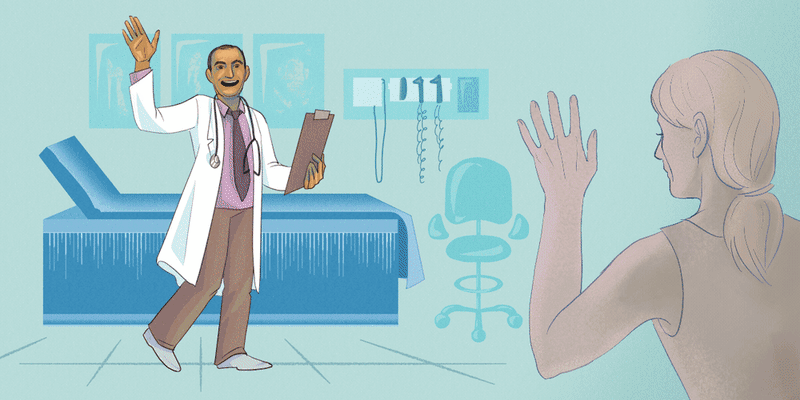In modern health care, where more than 70% of physicians are employed by health systems, the quest for practice autonomy, reduced administrative burden, and work-life balance is more challenging than ever. This shift toward employment has diluted physicians' influence, leading to increased burnout and a fragmentation of care — issues that directly undermine hospital performance and patient outcomes. A recent NEJM article by Guille and Sen describes the impact of physician distress through the diminished quality of care, medical errors, high turnover, and attrition from the medical field.
The stakes are uniquely high for women in medicine, who represent a rapidly growing demographic. They now constitute 38% of practicing physicians and nearly half of all residents and fellows, with their numbers exceeding 50% among medical students. According to the AAMC, the number of women in the active physician workforce increased by 97%, while the number of men increased by 13%. Despite their increasing presence, women physicians continue to face significant professional hurdles. A 2021 study found that 13% of hospital system leaders are women, 14% are chief medical officers, and 27% are chief executive officers. Similarly in academics, women comprise only 20% of department chairs of medical schools and 18% of dean positions. This leadership gap affects women’s ability to participate in decision-making, advocate for gender-related issues, and influence policy reform. National efforts to address these inequities are disappointingly slow. Issues such as the gender pay gap are predicted to self-correct only after 30–40 years according to Doximity’s 2023 Physician Compensation Report.
Physician unionization has significant potential to impact women in medicine, who are disproportionately affected by pay disparities and workplace inequalities. Women physicians consistently earn less than their male counterparts, and they face unique challenges that unionization could address by promoting fair wages and equitable working conditions.
Unionization promises a platform for women physicians to advocate more effectively for themselves, their patients, and their teams. By fostering a unified voice, unions can be instrumental in addressing the systemic disparities that disproportionately affect women in the field, advocating for policies that support gender equity in pay, opportunity, and working conditions. Such collective action is not just about improving the workplace; it's about enhancing the quality of health care for all.
There is a high level of interest in unionization among women physicians. For instance, a higher percentage of women than men have expressed willingness to join unions, potentially reflecting their desire for more structured support in negotiating fair compensation and advocating for better working conditions. This enthusiasm for unionization is seen as a way to combat the persistent gender pay gap and improve the overall working environment for women in medicine.
Moreover, unionization could provide a platform for addressing systemic issues contributing to gender disparities. Women physicians often engage in "third-shift" work, such as diversity and equity efforts, which is crucial for organizational success but frequently goes unrecognized in promotions or compensation. Through collective bargaining, unions could advocate for recognition and compensation of these contributions, aligning more closely with the principles of equity.
While unionization presents potential benefits for women physicians, it's also important to consider possible negative impacts and unintended consequences. Unions, by design, aim to serve the interests of their members collectively, but this approach might sometimes overlook the unique challenges and needs of women physicians, potentially reinforcing existing inequities rather than resolving them.
Unions typically negotiate contracts that apply uniformly to all members, the “one size fits all” approach. This could inadvertently disadvantage women physicians, who may have different career trajectories or need more flexible working conditions due to greater familial or caregiving responsibilities. Union platforms designed to create standardization of terms without room for individual negotiation can limit the ability of women to advocate for personal accommodations or advancements tailored to their specific situations.
Representation is a major factor in the disparities faced by women physicians in health care today. If union leadership does not proportionately represent women, their specific concerns might not be adequately addressed in bargaining processes. This lack of representation can perpetuate the gender disparities in leadership and decision-making roles within the medical field. Without a strong voice in union leadership, the unique issues that disproportionately affect women physicians — such as maternity leave policies, part-time work options, and pay equity — may not receive the necessary attention.
Union membership often comes with dues and other financial commitments. For women physicians, who on average earn less than their male counterparts, the additional financial burden might represent a significant concern, especially for those early in their careers or those with higher debt levels. These costs could deter some women from benefiting from union support, thus limiting their access to the advocacy and protection that unions can offer.
In conclusion, while physician unionization holds considerable promise for advancing gender equity in medicine, it is not without potential tradeoffs that could either introduce new challenges or exacerbate existing ones. Health systems and their leaders should not wait for union movements to drive transformative changes for women physicians. Immediate proactive measures are essential to establish more equitable practices, enhance flexibility, and amplify recognition of women's contributions in medicine. By doing so, we can foster an inclusive environment that supports all physicians in delivering the highest quality of care to their patients. Ensuring that policies, leadership decisions, and growth strategies are inclusive and address the varied needs of the entire physician workforce is crucial. With effective advocacy and intentional policy design, we can achieve truly equitable health care workplaces that value and recognize the contributions of all physicians equally.
How do you think unionization would help or hurt women in medicine? Share in the comments.
Dr. Sonia Ramamoorthy MD, MBA is a professor of surgery, double-boarded in general and colorectal surgery, and division chief of colorectal surgery at UC San Diego Health. She is the current President of the American Society of Colon and Rectal Surgeons and a member of the Doximity Women’s Advisory Board. You can reach her through her LinkedIn.
Illustration by Diana Connolly







